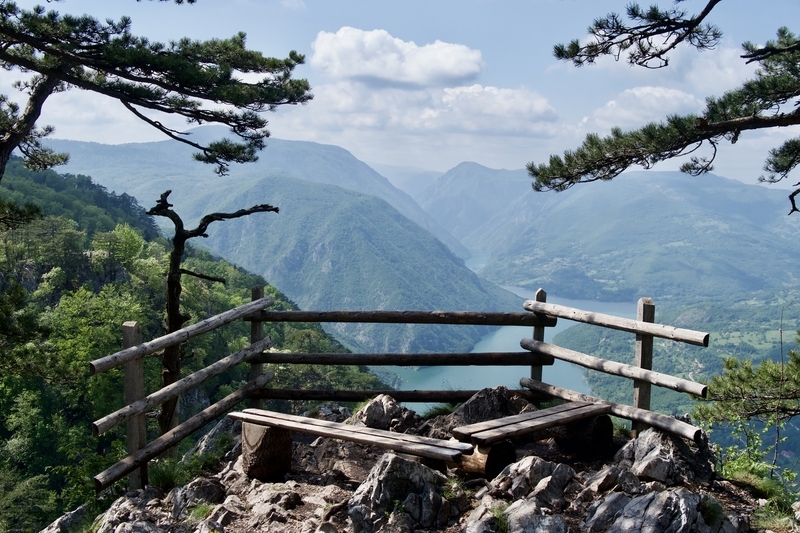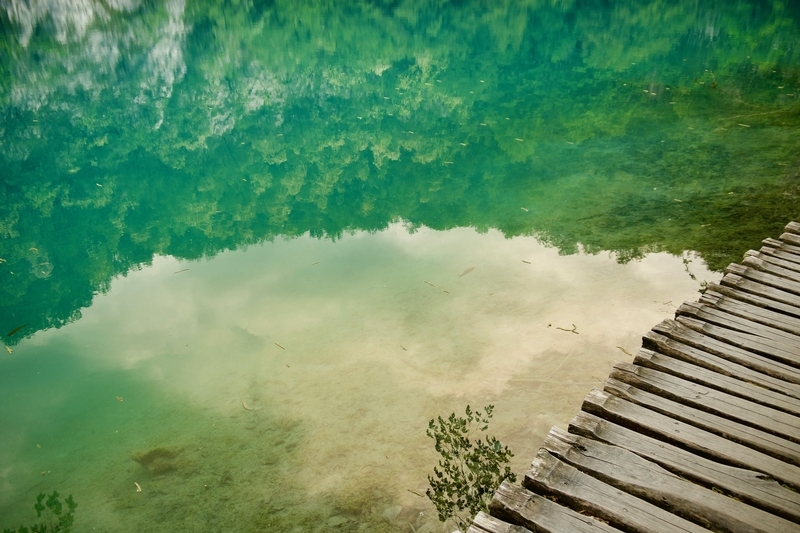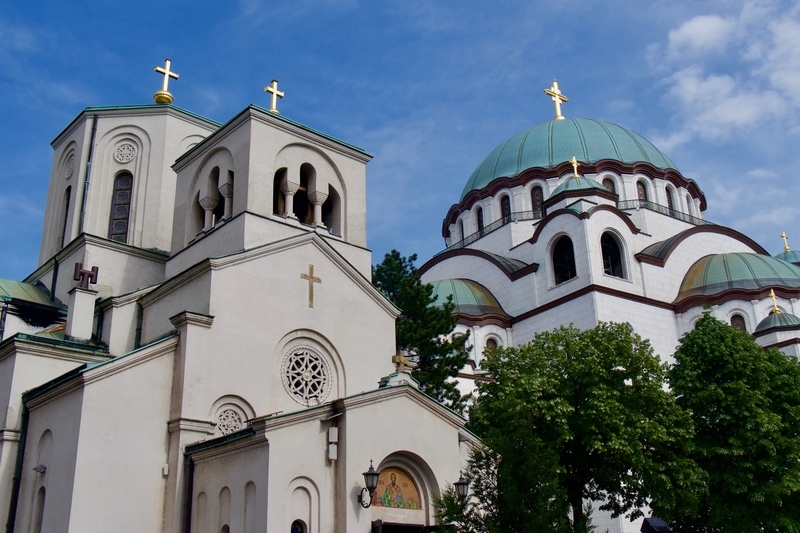
Serbia’s Cities: Two Days in Belgrade and Novi Sad
Serbia isn’t known for its monuments or its historical attractions. Thanks to a long history of conquests and the NATO bombings of the late 1990s, much of the country’s architectural heritage has been destroyed. But what Serbia lacks in must-see attractions, it more than makes up for with its youthful exuberance, its lively atmosphere and its pleasant green spaces.
Belgrade is Serbia’s capital and beating heart. It is a city that dates back 7,000 years, yet also one that is looking toward the future with optimism. After a tumultuous decade in the 1990s, this gritty city has transformed into one of Europe’s most vibrant and lively capitals. Belgrade embodies wacky. It oozes cool. Hipster cafes abound, lining bustling promenades. Delicate art nouveau classics juxtapose austere Soviet-style high rises.
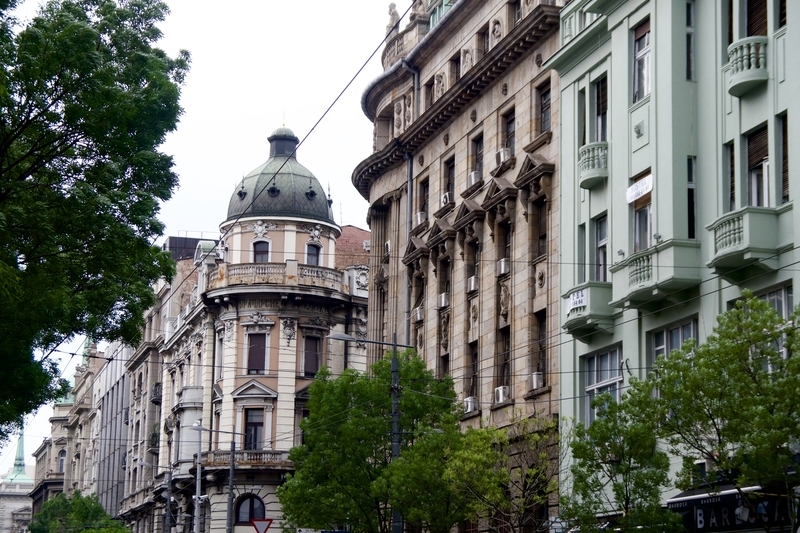
Often nicknamed the ‘Bad Boy of the Balkans’ due to its controversial involvement in the Kosovo War, Serbia is complex, complicated and controversial. Its recent past has been fraught with ethnic battles and religious tension. For many in the global community, Serbia’s brutal 4-year siege of Sarajevo, the mass murder at Srebrenica and the occupation of Kosovo in the 1990’s, are actions that will never be forgiven.
The country’s alleged ethnic cleansing of Albanians during the Kosovo War has often justified widespread Anti-Serbian sentiment around the world. While Serbia claimed its military maneuvers were an act of self defense, the US and Serbia’s neighboring countries condemned them as an act of aggression. As a result, in 1999 during the Kosovo war, US President Bill Clinton ordered the bombing of Belgrade under the NATO umbrella.
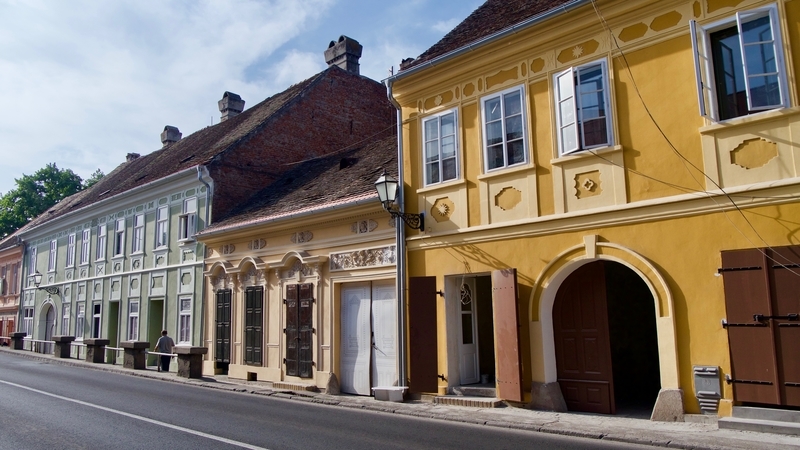
Over 2,500 Serb civilians were killed during the bombings, the economy was decimated and buildings were flattened. To this day, Serbs deny foul play during the war, while imploring that the rest of the world listen to their side of the story.
Belgrade: Serbia’s Vibrant Capital City
I visited Belgrade as the first stop in my Serbia itinerary, following a short stop at the Plitvice Lakes in nearby Croatia.
There are many lovely places to stay in Belgrade that cater to a variety of tastes and budgets. I stayed at the lovely Hedonist Hostel during my two days in Belgrade. With a communal courtyard, free rakia shots, clean rooms and a friendly and welcoming staff, the hostel remains one of my favorite budget accommodations to date.
The Hedonist Hostel offers free (tip based) walking tours of Belgrade each morning. I joined the walking tour on my first morning in Belgrade, in order to get better oriented with the layout of the city. The tour began at Belgrade’s main pedestrian drag, Knez Mihailova Street. Along the promenade, many buildings from the 19th and 20th centuries form a textbook of architectural styles. Lined with bookstores, souvenir shops, clothing emporiums and newspaper kiosks, the bustling pedestrian thoroughfare is a gathering point for all facets of Belgrade’s society. It is also a stage for amateur artists and street musicians.
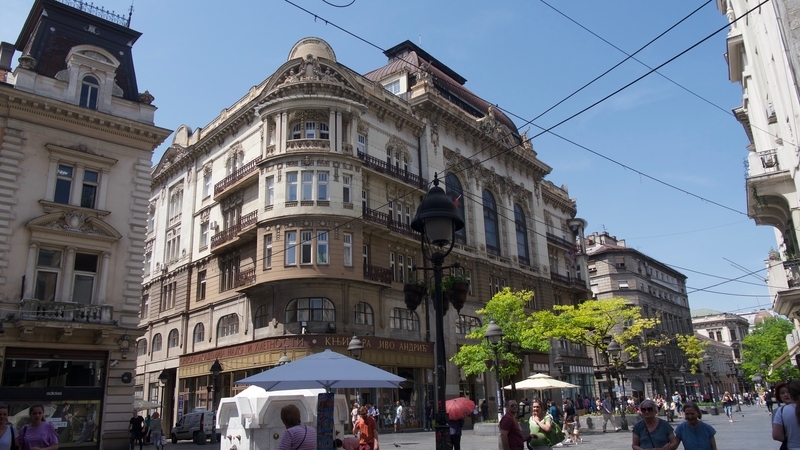
Knez Mihailova Street leads visitors to the Belgrade Fortress in Kalemegdan Park—a relic that overlooks the confluence of the Danube and Sava Rivers. Kalemegdan Park is Belgrade’s birthplace. The park’s grassy knolls contain relics of the many successive peoples and empires that once laid claim to the area. The park is home to a retrospective of Serbia’s fragmented past: a Roman well, an 18th century Austrian clock tower, a 19th century Slavic mansion and a military museum containing tanks and artillery.
Today, Kalemegdan Park is a pleasant place to bring a picnic lunch, lay out on the grass and soak in the riverside views.
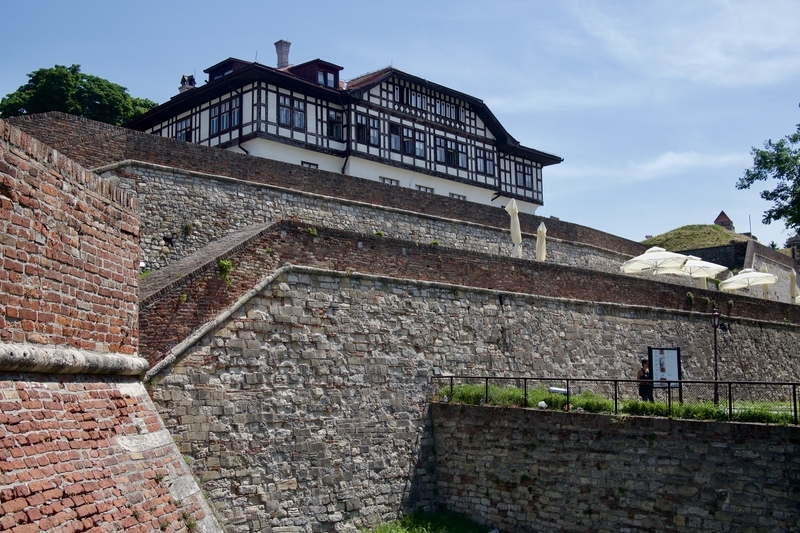
After our free walking tour of Belgrade, my fellow tour-mates and I headed to Skadarlija Street for lunch. Skadarlija is Belgrade’s main vintage quarter, sometime’s likened to Paris’ Montmartre.
The history of Skadarlija began in the 1830s, when a group of Gypsies settled abandoned trenches in the area. In 1854, these makeshift Gypsy hovels were transformed into brick buildings that drew artists and working class residents to the neighborhood.
It is a small, yet pleasant district, full of outdoor cafes, galleries and trendy bars.
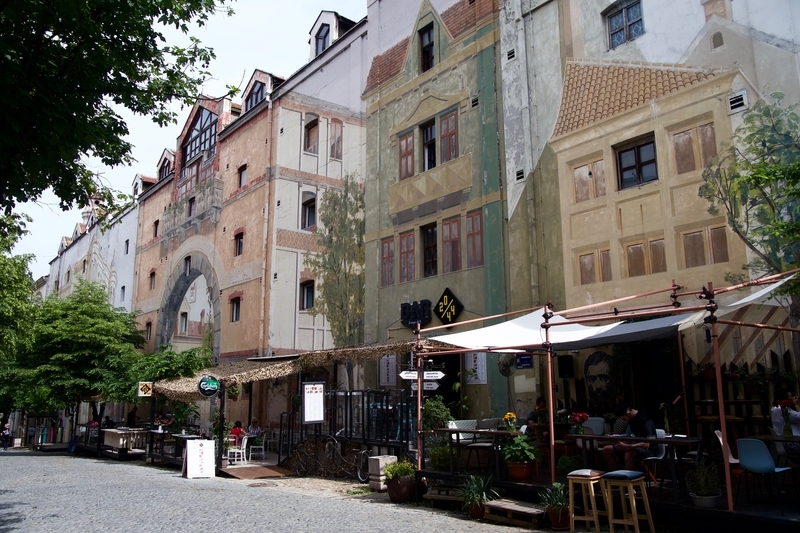
Once I filled my stomach with a healthy dose of cevapi, I parted ways with my newfound companions and simply ambled aimlessly around town–meandering through Belgrade’s vast network of parks and admiring its Orthodox heritage.
Like many post-Soviet cities, Belgrade houses an abundance of green spaces.
Near downtown Belgrade, the sprawling Tasmajdan Park is home to the imposing Church of Saint Mark. This huge five-domed church, based on the design of Kosovo’s Gračanica Monastery, is a beautiful–albeit contemporary–example of Serbo-Byzantine architecture.
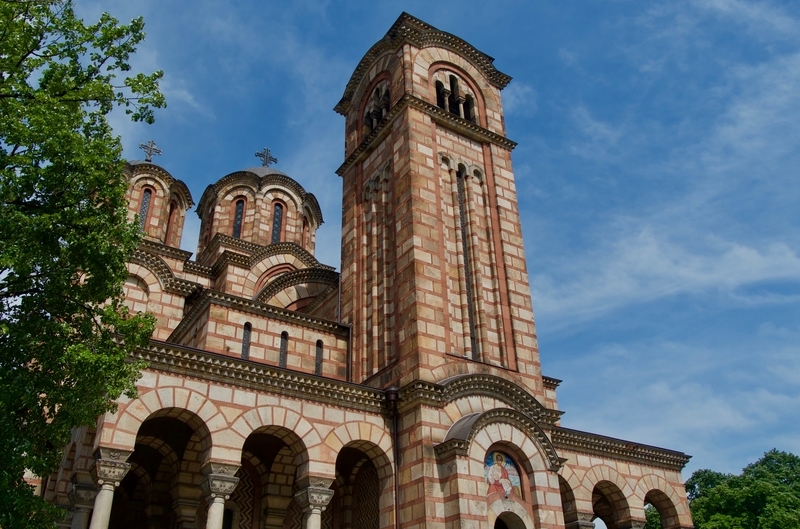
From the Church of Saint Mark, I wove through leafy streets to the larger and more famous Orthodox Cathedral of Saint Sava. The Church of Saint Sava dominates Belgrade’s cityscape and is one of the top things to see in Serbia. With a dome that soars 82 meters above ground, Saint Sava is the grandest church in the Balkans and one of the largest in the world
Construction of Saint Sava began in the 1930s. Today, much like the Sagrada Familia in Barcelona, construction on the church’s interior is ongoing.

Day Trip to Novi Sad from Belgrade
After a day of meandering down Belgrade’s funky streets, strolling along its pedestrian promenades and visiting its religious and historical monuments, I escaped the hustle and bustle of Belgrade with a day trip to Novi Sad–a pleasant university town slated to be Europe’s capital of culture in 2021.
Along with two fellow travelers from my hostel, I spent the afternoon relishing Novi Sad’s walkable streets and riverside views.
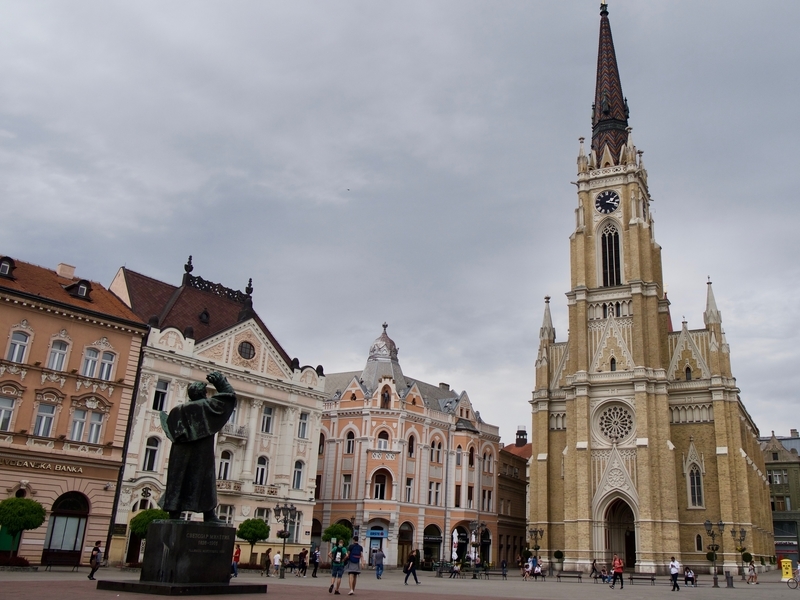
Situated an hour and a half by bus from Belgrade, Novi Sad offers its own distinctive appeal. Its architecture is lovely, with storybook buildings, cobbled streets and a venerable fortress. This colorful city on the banks of the Danube has all the pleasantries of Belgrade, neatly packaged into a manageable riverside town.
Novi Sad is often referred to as Serbia’s prettiest city, due to its colorful buildings and its compact, walkable core. The city’s main street, Zmaj Jovina, stretches from the main square to the waterfront. Lined with cafes, bars and restaurants, it is the perfect place to sit back and watch life go by.
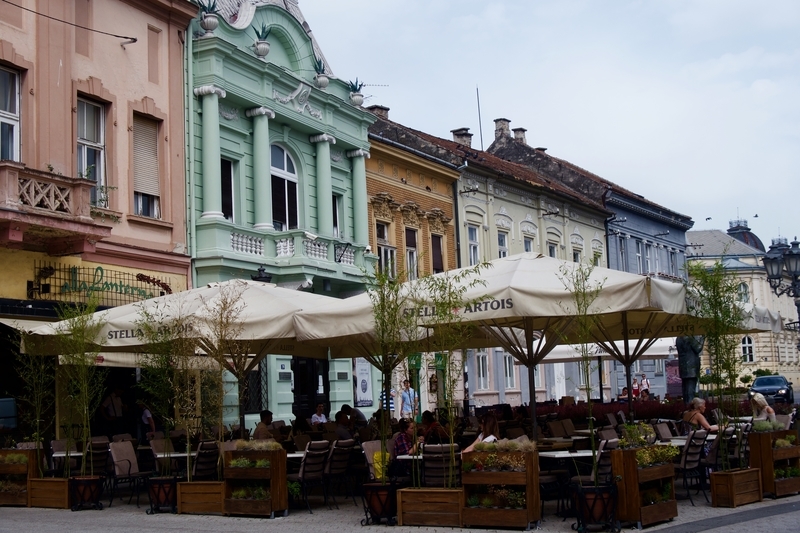
Across the river from Novi Sad’s historic city center, lies the Petrovaradin Fortress.
Towering over the Danube River, the 40m-high citadel is considered Europe’s second-biggest. The fortress dates back to the Middle Ages and was reinforced during the Turkish invasion in the fifteenth century. Yugoslavia’s ex-president Tito was once held in its dungeons as prisoner.
Each year, in July, the Petrovaradin Fortress in Novi Sad hosts the EXIT festival–a wildly popular music festival that draws over 200,000 visitors to this quaint university town.
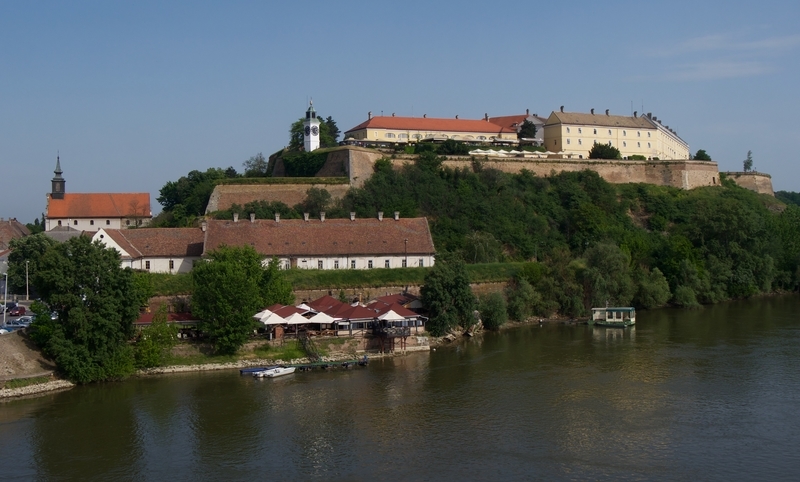
***
Serbia is welcoming, vibrant and full of life. But Serbia’s international image is nothing short of negative. The country’s recent history hangs over its head like a raincloud. And to this day, Serbia is a fractious nation with unresolved issues and a constant need to defend its actions.
Yet, despite Serbia’s strained relationship with the United States and its Balkan neighbors, the Serbs I met were almost friendly to a fault and eager to practice their near-flawless English. They were proud and passionate and anxious to dispel the pejorative stereotypes that much of the world harbors toward their countrymen.
Though Serbia isn’t (and likely will never be) Europe’s hottest travel destination, the country’s two main cities–Belgrade and nearby Novi Sad–are gaining notoriety for their wealth of things to see and do. From nightclubs to hipster cafes and from quiet city parks to bustling pedestrian promenades, these two vibrant and livable cities have a little bit of something for everyone.
What’s more, their welcoming residents will do everything they can to ensure you have a good time.
